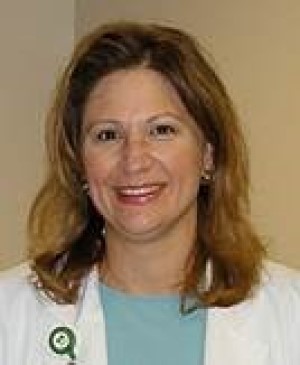Southwest General uses Cerner tech to slash time patients spend in chemo center

Pandrangi Tower at Southwest General Health Center
Photo: Southwest General Health Center
The National Cancer Institute predicts nearly 40% of Americans will be diagnosed with cancer at some point during their lifetimes. Ohio's Southwest General Health Center is working to revolutionize cancer care through improved chemotherapy infusion efficiency, after transitioning from paper records to Cerner's electronic health record technology.
THE PROBLEM
"The biggest challenge we faced before turning to Cerner was that some of our records were still on paper," said Deborah Harwood, RN, director of oncology services at Southwest General Health Center.
"This presented a challenge of quickly locating patient information across a multidisciplinary team. Information such as registration documents, patient schedules, and lab and pharmacy orders were loose documents needing to be filed into the chart, making for inefficient workflows and in some cases delayed information to care teams."
Southwest General implemented Cerner Oncology in May 2017. Providers gained access to prior ambulatory visits, acute care encounters, test results, images, medication history, consumer phone messages and other important clinical information within one record.
"The system, which integrates into the Cerner Millennium electronic health record, gives the care team members a full patient view and enables them to make the best care decisions," Harwood said. "Going paperless has been magnificent. Providers are equipped with the most up-to-date technology, and patients can feel secure, knowing their caregivers have the tools to deliver high-quality care with confidence."
PROPOSAL
When the health center looked to go paperless, staff compared several different EHR vendors head to head to see which company offered the best possible technology solutions to meet its needs.
"Part of the draw of Cerner's oncology solution is that it is integrated into the existing Cerner Millennium EHR, which enhances the single patient health record view to include oncology," Harwood explained. "The solution is designed to give providers access to prior ambulatory visits, acute care encounters, test results, images, medications and other important clinical information."
"Before, we would manually calculate how much drug a patient could receive in his or her lifetime. I can't tell you how big a difference it makes to have that automated."
Deborah Harwood, RN, Southwest General Health Center
Providing the care team a full view of their patient helps enable them to make the best care decisions, she added.
"We also considered how a potential new vendor would support the onboarding of new technology, including staff training," she said. "Working with Cerner IT Works has allowed us to limit the strain on staff associated with the technical aspects of the system, allowing them to focus on training on the new system and the provision of better patient care workflows."
MARKETPLACE
There are many vendors with electronic health records systems on the health IT market, including Allscripts, athenahealth, Cerner, DrChrono, eClinicalWorks, Epic, Greenway Health, HCS, Meditech and NextGen Healthcare.
MEETING THE CHALLENGE
In the old workflow, nurses had to constantly look for paper charts. This wasted time, added frustration and potentially increased risk.
"And of course, any time a provider handwrites orders or prescriptions, there are legibility concerns," Harwood noted. "When we moved to electronic computer order entry for chemotherapy, we could easily look at an order and know the dose and calculations. Providers and nurses realized increased efficiency and satisfaction as a result."
After onboarding the new system, nurses began communicating with the pharmacy through the solution to see if a drug was ready for pickup, saving them steps away from their patient to visit the pharmacy.
"When the nurse or care team member doesn't spend as much time away from the patient, by using technology for ease of communication, the care experience is improved for both the patient and the clinician," Harwood said. "Furthermore, the oncology system helps track cumulative drug doses. This is especially important for cancer patients who are only allowed a limited lifetime dose of certain drugs.
"Before, we would manually calculate how much drug a patient could receive in his or her lifetime," she added. "I can't tell you how big a difference it makes to have that automated."
RESULTS
Care has become more efficient, and the result of the efficiency is a decrease in the time patients need to be in the infusion center, Harwood reported.
"With Cerner Oncology and training as part of their continued improvement and Cerner upgrades, the average throughput time for the chemotherapy infusion center fell 104 minutes, a nearly 49% decrease," she said.
ADVICE FOR OTHERS
"Having the most up-to-date technology makes a vast difference in care provision and overall operations," Harwood advised. "I would recommend other provider organizations do their research and look at technology, support and references from other health systems. Having a partner that's supportive and agile has been key to our success on the new system."
Twitter: @SiwickiHealthIT
Email the writer: bsiwicki@himss.org
Healthcare IT News is a HIMSS Media publication.
























